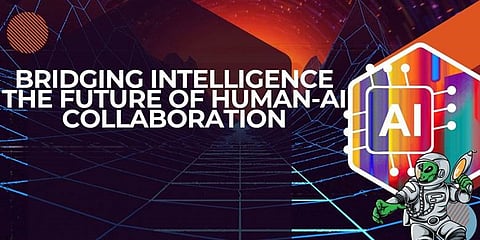

As artificial intelligence (AI) continues to evolve, a new paradigm has emerged that integrates human oversight into AI-driven processes—Human-in-the-Loop (HITL) AI. This innovative approach ensures that AI systems enhance, rather than replace, human decision-making, fostering trust, efficiency, and adaptability. Priyadharshini Krishnamurthy, a leading researcher in AI collaborations, explores how HITL AI is reshaping decision-making across industries.
The traditional approach to AI implementation relied heavily on fully automated systems that made decisions independently. However, early deployments faced challenges such as lack of transparency, reduced user trust, and resistance from professionals. The emergence of HITL AI offers a solution by integrating human oversight into automated processes, improving decision-making accuracy and system acceptance. Organizations that adopt hybrid AI frameworks report significant gains in efficiency, quality control, and employee satisfaction.
Trust is fundamental to the success of AI systems, and HITL AI fosters this trust through transparency, interpretability, and user engagement. Studies show that when AI systems are designed to support human expertise rather than replace it, decision quality improves substantially. Users engaging with collaborative AI experience higher confidence in AI-generated insights, ultimately increasing their willingness to rely on these systems for critical decisions.
This augmented partnership between human judgment and machine capabilities creates a virtuous cycle of improved outcomes and strengthened trust. Organizations implementing explainable AI models that clearly communicate their reasoning processes see higher adoption rates among stakeholders. The most effective HITL frameworks incorporate continuous learning mechanisms that adapt to user feedback while maintaining clear boundaries of responsibility. By prioritizing human agency and designing systems that enhance rather than diminish professional expertise, organizations can build AI ecosystems that earn sustained trust across diverse operational contexts.
HITL AI operates on a spectrum, from minimal human oversight to deep collaboration, depending on the complexity of the task. Adaptive learning mechanisms enable AI to refine its outputs based on human feedback, leading to continuous improvement. For instance, in sectors like healthcare and finance, AI-assisted decision-making reduces error rates while maintaining human expertise at the forefront. This dynamic oversight model also mitigates algorithmic biases, ensuring that AI systems remain fair and accountable.
One of the most significant challenges in AI adoption has been the "black box" nature of many systems. HITL AI prioritizes transparency by making AI decision-making processes understandable and interpretable. Organizations that implement explainable AI frameworks report higher trust levels among users, leading to increased adoption rates. Clear documentation, performance audits, and user feedback loops further enhance system reliability and acceptance.
The effectiveness of HITL AI depends on thoughtful design principles that align with human cognitive processes. AI systems that incorporate user-friendly interfaces, emotional intelligence, and structured feedback mechanisms perform better in real-world applications. Industries adopting personalized AI interfaces see improved productivity and decision-making accuracy, as AI systems adapt to individual expertise levels and working styles.
Successful HITL implementation requires strategic consideration of how humans and AI complement each other's capabilities. Organizations that invest in contextual awareness features enable more intuitive human-AI collaboration, reducing cognitive load on operators. These systems must balance automation with meaningful human oversight, providing transparent reasoning for AI recommendations while allowing appropriate intervention. Cross-disciplinary development teams incorporating cognitive scientists, domain experts, and ethicists create more effective HITL frameworks that account for diverse human needs and operational contexts. Regular performance assessment through both quantitative metrics and qualitative user experience data ensures continuous improvement of human-AI collaborative systems.
The last word in the phrase was "government". Organizations that use artificial intelligence are therefore increasingly going to need government-format governance frameworks to deal with transparency issues. AI Governance does not only ensure compliance with the law but also enhances the operational risk management capabilities of an organization. In this sense, the evolution of HITL AI needs to be given much attention to ethical implementation standards, bias mitigation strategies, and strict oversight mechanisms.
Accountability arrangements with well-defined roles and responsibilities should be put in place for organizations since they require well-structured sustainable AI ecosystems. For example, regular audits, comprehensive documentation of AI routing for decision making, and arrangements for easy stakeholder feedback. Transparency in AI governance strengthens the resilience of organizations while providing the public with a wider streamlined confidence in artificially intelligent systems.
The HITLAAI is truly a turning point in how AI systems are designed and deployed. Organizations can enjoy the benefits of automated action without losing accountability and trust through human-centric AI decision-making. Priyadharshini Krishnamurthy's research points out that AI is destined not to replace but to work with humans - to come up with systems that possess intelligence, are responsible, and are human-centric.
